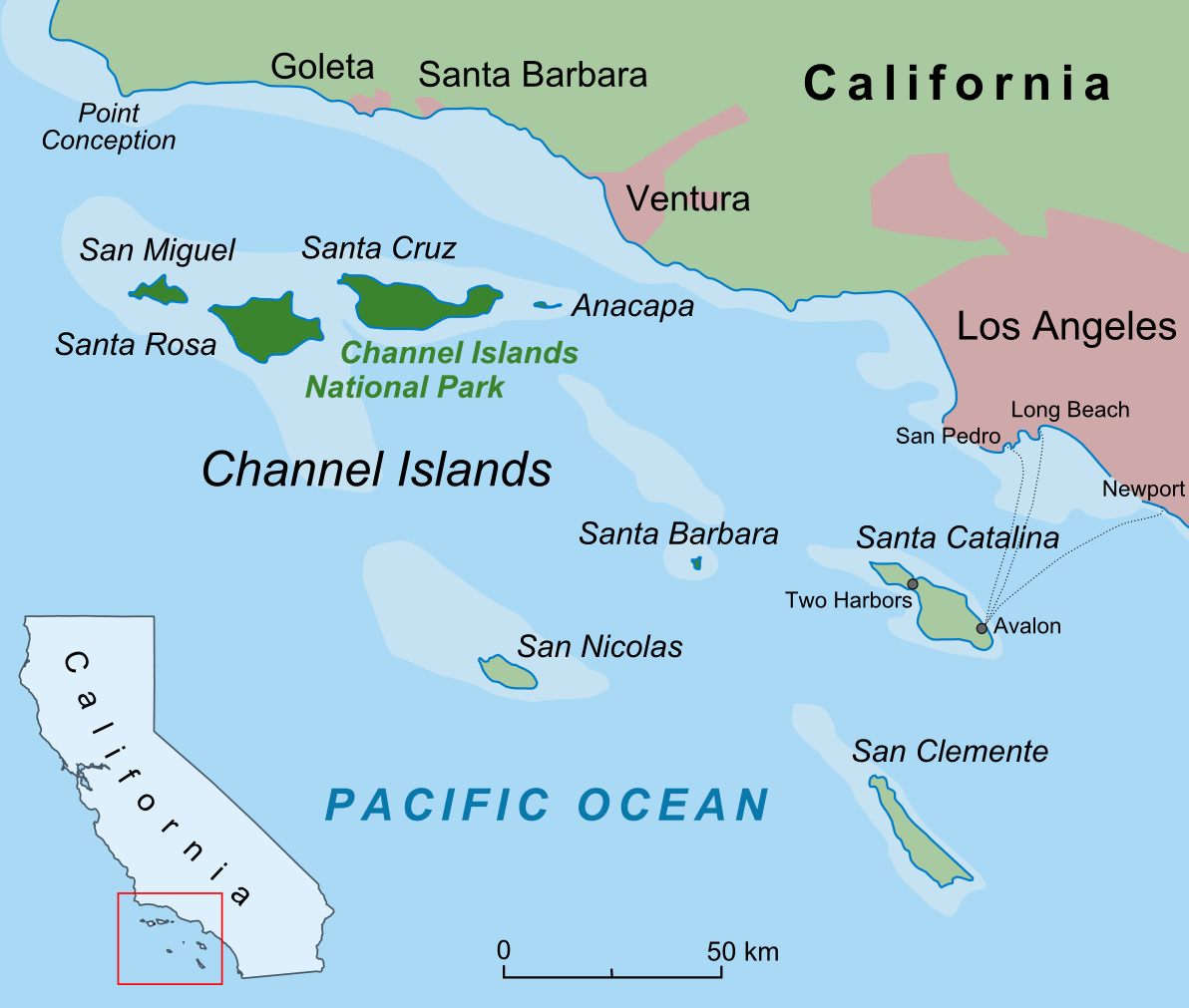 |
| Channel Islands California |
We left Santa Barbara, California on November 4, 2019 and sailed 24 miles across the Santa Barbara Channel for Santa Cruz Island. According to legend, Santa Cruz Island was named for a priest's staff accidentally left on the island during the Portola expedition of 1769. A Chumash Indian found the cross-tipped stave and returned it to the priest. The Spaniards were so impressed that they called this island of friendly people "La Isla del Santa Cruz," the Island of the Sacred Cross. Today the protection and preservation of Santa Cruz Island is divided between The Nature Conservancy and the National Park Service. The Nature Conservancy owns and manages the western 76 percent of the island, while the eastern 24 percent is owned and managed by the National Park Service. Our plans were to spend a week at the island visiting those anchorages with unusual and interesting names like Prisoners Harbor, Little Scorpion Bay and Yellow Bank.
 |
| "Little Lara's" Anchorages on Santa Cruz Island |
Prisoners Harbor's name comes from a series of events that took place in 1830, which are sketchy and somewhat contradictory, but roughly this is what occurred: Santa Cruz Island lay deserted for many
 |
| "Little Lara" anchored at Prisoners Harbor |
years after the native Chumash were removed to the mainland in the early 1800s. In February 1830, the U.S. Brig "Maria Ester" anchored off the village of Santa Barbara. Its captain, John Christian Holmes, sought permission to offload 80 convicted criminals. Failing to obtain approval to discharge these prisoners, Holmes transported around 30 convicts to Prisoners Harbor with provisions supplied by the padres of the Santa Barbara Mission. The fate of the balance of the prisoners remains unclear. Those convicts left on Santa Cruz initially fared well, constructing crude shelters against the elements. But the men were determined to return to the mainland, so they built rafts from whatever material was at hand. Without sails, oars or paddles they were at the mercy of wind and currents. They might have drifted endlessly if not for a storm that eventually pushed them ashore on the mainland in the area of the Carpinteria Valley. Local authorities rounded them up in short order. Imprisoned for a time, some of the men were reportedly flogged for daring to escape their island prison. Eventually, they were released and were absorbed back into society.
 |
| "Little Lara" anchored at Little Scorpion Bay |
It is unclear how Little Scorpion Bay got its name. It might refer to the shape of a nearby canyon or to the presences of small scorpions that were found in the area. Little Scorpion Bay is noted for its well protected waters in most any weather. Along the east side of the cove small cliffs dropped straight down into the water and a thin line of kelp hints at a rock reef below. To the west of the anchorage is Scorpion Rock (Bird Rock). It’s fairly obvious that Scorpion Rock is a very popular place to be -- if you are a bird. Super thick seabird guano cakes it as throngs of various seabirds, large and small, roost on the barren slab overlooking the eastern Santa Barbara Channel. Generally a down coast current flows carrying a variety of food for the seabirds to feast on, making it crowded on this knobby rock. While anchored here we saw and heard raucous western gulls, pelagic cormorants, storm-petrels, and oyster catchers. The Northwest winds can also bring to the boat the smelly aroma of these birds.
Yellow Bank and Smugglers Cove are considered to be all one large bay. They are located on the southeast end of the island and offer great protection from all but an east wind. We had hoped to go ashore here to hike the island trails on this end of the island. We were amazed at the lack of swell and wind when we first arrived, anchoring just off a pebbled covered beach. Once "Little Lara" was settled, we had lunch and prepared to dingy ashore. Within those few short hours a surge started to build and waves began to crash on the beach. Soon the wind increased and we thought we were in for a rough night. Just after midnight, however, things settled down allowing us to get a good night's sleep.
 |
| Hiking the trails on Santa Cruz Island |
 |
| Beach Rock Sculptures at Prisoners Harbor |























